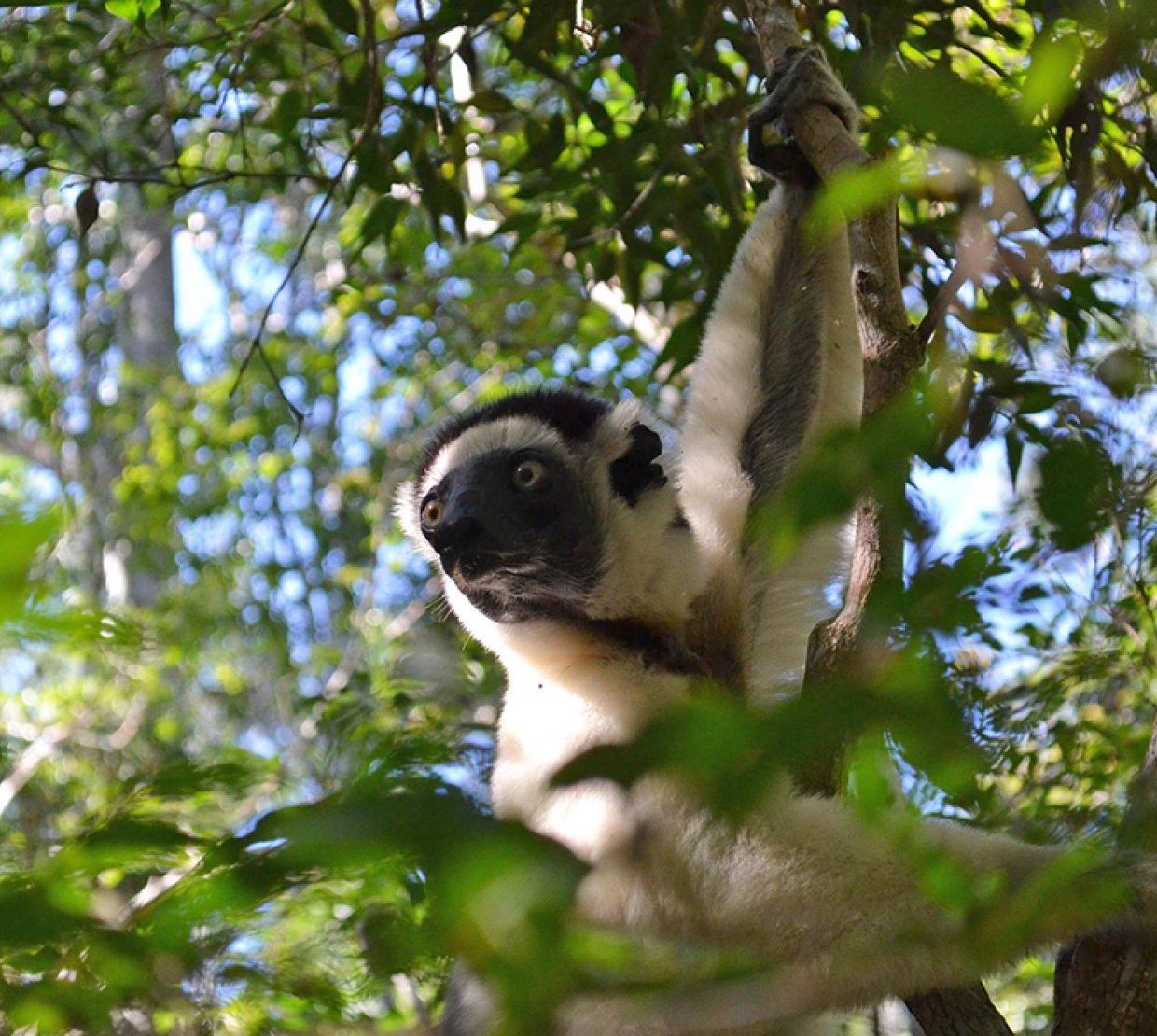The explosion of new lemur species that began when the first of those animals arrived on Madagascar more than 50 million years ago has not died down, according to scientists who’ve identified three different groups of lemurs with high speciation rates.
The research led by Katie Everson of the College of Science provides evidence that lemurs continue to defy the evolutionary principle that says rapid species expansion is followed by a slowdown. Published in Nature Communications and funded by the National Science Foundation, the study sheds new light on a primate under extreme extinction pressure.
“At the same time that more and more lemur species are still evolving, we are also driving them rapidly to extinction,” said Everson, assistant professor of integrative biology. “Ninety-five percent of lemur species are considered threatened.”
There are more than 100 extant lemur species, plus at least 16 that have gone extinct over the last 2,000 years in the wake of human settlement on Madagascar. Lemurs are endemic to Madagascar, and because of that the island east of Africa, roughly the size of Oregon and California combined, is home to 15% of all primate species.
“When people think of lemurs they often think of the famous ring-tailed lemur, but lemurs take many different forms,” Everson said. “They include the smallest primate in the world, Madame Berthe’s mouse lemur, which is only 3.6 inches long and weighs 1 ounce, and an extinct lemur that was as large as a gorilla.”
Lemurs are strepsirrhine primates, a suborder that branched off earlier in primate evolution than the haplorhines – monkeys, apes and humans. They have large eyes adapted for low light, and moist noses that enhance their sense of smell. Strepsirrhine primates are also known for having a claw and teeth specialized for grooming.
Lemurs arrived on predator-free Madagascar 53.2 million years ago according to the phylogenetic analysis led by Everson, whose team sequenced DNA from 129 animals. After reaching the island, likely floating from Africa on natural rafts, lemurs followed a course of adaptive radiation. Their evolutionary tree branched into a plethora of species well suited to the island’s diverse and isolated habitats, which include rain forests, dry deciduous forests, spiny forests, montane forests, coastal forests and mangroves.
“But our research finds that this is not the whole story – lemur species diversity is still exploding today after two millennia of human presence,” she said. “There are three specific groups of lemurs – mouse lemurs, sportive lemur and brown lemurs – where speciation rates are currently very high.”




